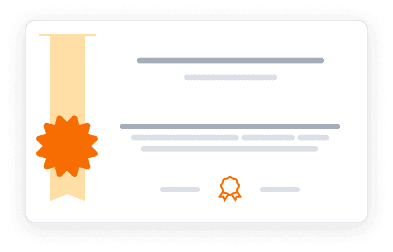This course is part of Paleografía y caligrafía de manuscritos hispánicos..
This innovative course offers a unique learning experience through the reading and writing of historical lettering found in Hispanic medieval and modern archives. Students will develop a deep understanding of the historical context in which medieval Hispanic cultures created handwritten documents as forms of communication. The curriculum integrates both calligraphy (reproduction) and paleography (transcription) in a synergistic approach that provides superior knowledge compared to isolated letter reproduction or mere paleographic transcription. Following digital humanities principles, this collaborative learning method contextualizes reading and writing skills for medieval and modern manuscripts. The course covers the evolution of writing from 9th to 18th century Hispanic manuscripts, examining various script types including Visigothic, Caroline, Gothic, Humanistic, and Baroque ornamental scripts. Students will learn the basic principles of calligraphic practice while mastering paleographic methods for reading and analyzing Hispanic manuscripts. The course explores the rules, factors, materials, tools, and principles involved in the development of calligraphic strokes in each historical period, with practical exercises to reinforce learning. Particularly valuable for archives professionals, conservation specialists, professional calligraphers, and graduate students interested in Hispanic manuscript culture, this course provides essential skills for working with handwritten cultural heritage documents.
4.5
(17 ratings)
16,761 already enrolled
Instructors:
Spanish
Español
What you'll learn
Master the basic principles of calligraphic practice in combination with paleographic transcription Apply paleographic methods to read and analyze medieval and modern Hispanic manuscripts Understand the rules, materials, tools and principles involved in historical calligraphic development Identify the morphology and characteristics of each letter type from Visigothic to 18th century cursive scripts Recognize the different cycles of library and documentary Gothic scripts Contextualize manuscript production within its historical and cultural framework Develop practical skills through guided exercises in both reading and writing historical scripts Integrate digital humanities approaches to manuscript analysis
Skills you'll gain
This course includes:
PreRecorded video
Graded assignments, exams
Access on Mobile, Tablet, Desktop
Limited Access access
Shareable certificate
Closed caption
Top companies offer this course to their employees
Top companies provide this course to enhance their employees' skills, ensuring they excel in handling complex projects and drive organizational success.





There are 6 modules in this course
This course provides a comprehensive introduction to the interrelated fields of calligraphy and paleography, focusing specifically on Hispanic manuscripts from the medieval and early modern periods (9th to 18th centuries). The curriculum uniquely combines both reproduction (calligraphy) and transcription (paleography) skills, creating a synergistic learning experience that surpasses traditional approaches to manuscript studies. Students will explore the historical and cultural contexts that shaped different writing styles, while learning to recognize, analyze, and reproduce various script types that evolved throughout Hispanic history. The course covers the morphology and characteristics of each letterform, from Visigothic or Hispanic pre-Caroline scripts to 18th-century cursive styles, including all cycles of library and documentary Gothic scripts. Participants will master paleographic methods for reading and analyzing Hispanic manuscripts while simultaneously learning the rules, materials, tools, and principles involved in creating authentic calligraphic strokes for each historical period. Through practical exercises and collaborative learning approaches grounded in digital humanities, students will develop both analytical and creative skills necessary for working with historical manuscripts.
Introducción, Paleografía, Caligrafía y contexto cultural
Module 1
Alta Edad Media en Europa y España y su legado escrito (800-1000)
Module 2
La Baja Edad Media en Europa y España y su legado escrito (1000-1300 c.e.)
Module 3
La Baja Edad Media en Europa y España y su legado escrito (1300-1450 c.e.)
Module 4
Los "largos siglos XVI-XVII" en Europa y España: desarrollo caligráfico (1450-1640 c.e.)
Module 5
La Edad Moderna en España y Europa: su influencia caligráfica (1640-1789)
Module 6
Fee Structure
Individual course purchase is not available - to enroll in this course with a certificate, you need to purchase the complete Professional Certificate Course. For enrollment and detailed fee structure, visit the following: Paleografía y caligrafía de manuscritos hispánicos.
Payment options
Financial Aid
Instructors

5 Courses
Scholar in Archival Science and Written Culture
Dr. Diego Navarro Bonilla, a professor at Universidad Carlos III de Madrid, specializes in archival science, paleography, calligraphy, and the history of written culture. Holding doctorates in Documentation (UC3M) and Conflicts, Security, and Solidarity (University of Zaragoza), he directs the Master's program in Archives, Document Management, and Digital Continuity at UC3M. His research focuses on historical manuscripts, digital paleography, and the integration of archival practices with security and defense intelligence.

5 Courses
Historian and Expert in Archival Science and Intelligence History
Dr. Eduardo Juárez Valero, a professor at Universidad Carlos III de Madrid, specializes in archival science, paleography, Spanish history, and the history of intelligence services. With a doctorate in History from UNED, he also serves as the President and Principal Investigator of the Centro de Investigación de la Guerra Civil Española (CIGCE). His work spans from medieval documentation to the study of espionage and intelligence structures during the Spanish Civil War and beyond.
Testimonials
Testimonials and success stories are a testament to the quality of this program and its impact on your career and learning journey. Be the first to help others make an informed decision by sharing your review of the course.
Frequently asked questions
Below are some of the most commonly asked questions about this course. We aim to provide clear and concise answers to help you better understand the course content, structure, and any other relevant information. If you have any additional questions or if your question is not listed here, please don't hesitate to reach out to our support team for further assistance.



